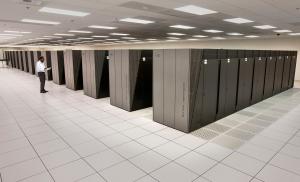LAB REPORT
Science and Technology Making Headlines
Nov. 18, 2016


Lab rats may no longer be necessary in drug trials, thanks to Lawrence Livermore scientists who have developed a new device called iChip.
Saying goodbye to lab rats
Ninety percent of drugs tested on humans do not work. These failures are an expensive but necessary part of the estimated $2.6 billion it costs to bring a medicine to market.
But Lawrence Livermore scientists are working on a more efficient and humane process, based on a quarter-sized plastic slide. It’s a tiny replica of the human brain, rendered in clusters of about 300,000 cells surrounded by small copper wires. Based on that, the researchers have set out to build a comprehensive human body in miniature. Called the iChip, it could be the future of drug testing and doesn’t need animals or humans as its test subjects.
“Most people aren’t really thrilled with us injecting anything new into a human,” says Heather Enright, an iChip researcher.
But testing drugs on animals instead provides limited information. For example, tumors develop differently in mice than they do in humans. With iChip, a dose of a new medication could be injected into the cells of a mini organ, and researchers could monitor the effects without harming live subjects.


Lawrence Livermore’s Sequoia is No. 4 on the top 500 list of supercomputers in the world.
The usual suspects
The list of the Top 500 supercomputers has no surprises. China leads the way with Nos. 1 and 2. The United States holds spots three, four and five going to Titan at the Oak Ridge National Laboratory, Sequoia at the Lawrence Livermore National Laboratory and Cori at Berkeley Lab's National Energy Research Scientific Computing Center, respectively
But the U.S. comes up even with China in the actual number of supercomputers each country has: 171 each. Second place Germany is way behind with a total of 32 supercomputers.
The list is dominated by the US and China -- superpowers in computing. It shows most strikingly in terms of their performance. China’s No. 1 Sunway tops out at 93 petaflops (a petaflop is a quadrillion (thousand trillion) ) "floating point operations per second" --- or FLOPS. LLNL’s Sequoia at No. 4 has attained 17 petaflops.


Lab researchers look at microcapsules that can be used to capture carbon dioxide from coal or natural gas-fired power plants, as well as in industrial processes like steel and cement production. Photo by Julie Russell/LLNL.
From the kitchen cupboard to industry
Using the same baking soda found in most grocery stores, Lawrence Livermore scientists and collaborators have created a significant advance in carbon dioxide capture.
The team developed a new type of carbon capture media composed of core-shell microcapsules, which consist of a highly permeable polymer shell and a fluid (made up of sodium carbonate solution) that reacts with and absorbs carbon dioxide (CO2). Sodium carbonate is typically known as the main ingredient in baking soda. The capsules keep the liquid contained inside the core, and allow the CO2 gas to pass back and forth through the capsule shell.
To date, microcapsules have been used for controlled delivery and release (e.g., pharmaceuticals, food flavoring, cosmetics, agriculture, etc.) -- but this is the first demonstration of using this approach for controlled CO2 capture and release.
The goal is to partner with industry to bring the technology to existing and new power plants.


Lawrence Livermore has partnered with the California Public Utilities Commission to protect the power gridfrom cyber threats.
Protecting the grid from cyber threats
To protect power grid integration from cyber threats in California, the California Public Utilities Commission has funded a cyber information sharing program, called California Energy Systems for the 21st Century (CES-21).
According to Jamie Van Randwyck, project lead for Lawrence Livermore National Laboratory, “The CES-21 program has been a highly productive and collaborative initiative thus far. The research and development being pursued in this program has the potential to change the way utilities protect their critical assets.”
CES-21, launched in 2012, aims to provide accurate and fast communication of cyber threats and the development of automated response capabilities to be executed prior to critical infrastructure damage. This initiative includes a team of technical experts from California's three largest public utilities -- Pacific Gas and Electric, Southern California Edison and San Diego Gas and Electric -- and Lawrence Livermore National Laboratory that will perform research in power grid cyber security.


This first version of a new layered perovskite solar cell already achieves an efficiency of more than 20 percent, rivaling many commercial solar cells. Image courtesy of Onur Ergen/UC Berkeley.
Look on the sunny side
A Lawrence Livermore scientist is working with collaborators to develop solar cells made of the highly popular and inexpensive perovskite material. The new method sandwiches two forms of perovskites into one photovoltaic cell using graphene aerogel to generate electricity from sunlight with increased efficiency.
The team shows that using the mineral perovskite in graded band gap solar cells achieves an average steady efficiency rate of 21.7 percent for all devices.
Solar efficiency refers to what portion of sunlight energy is converted to electricity via the use of photovoltaic technology. In the new research, the graded band gap perovskite device achieved an 18.4 percent steady efficiency rate and a peak rate of 26 percent. Typical solar silicon panels have a maximum efficiency rate of about 20 percent, but the steady rate can be less than that.


Lab Report takes a break
The Livermore Lab Report will take a break for the Thanksgiving holiday. It will return Dec. 2.





